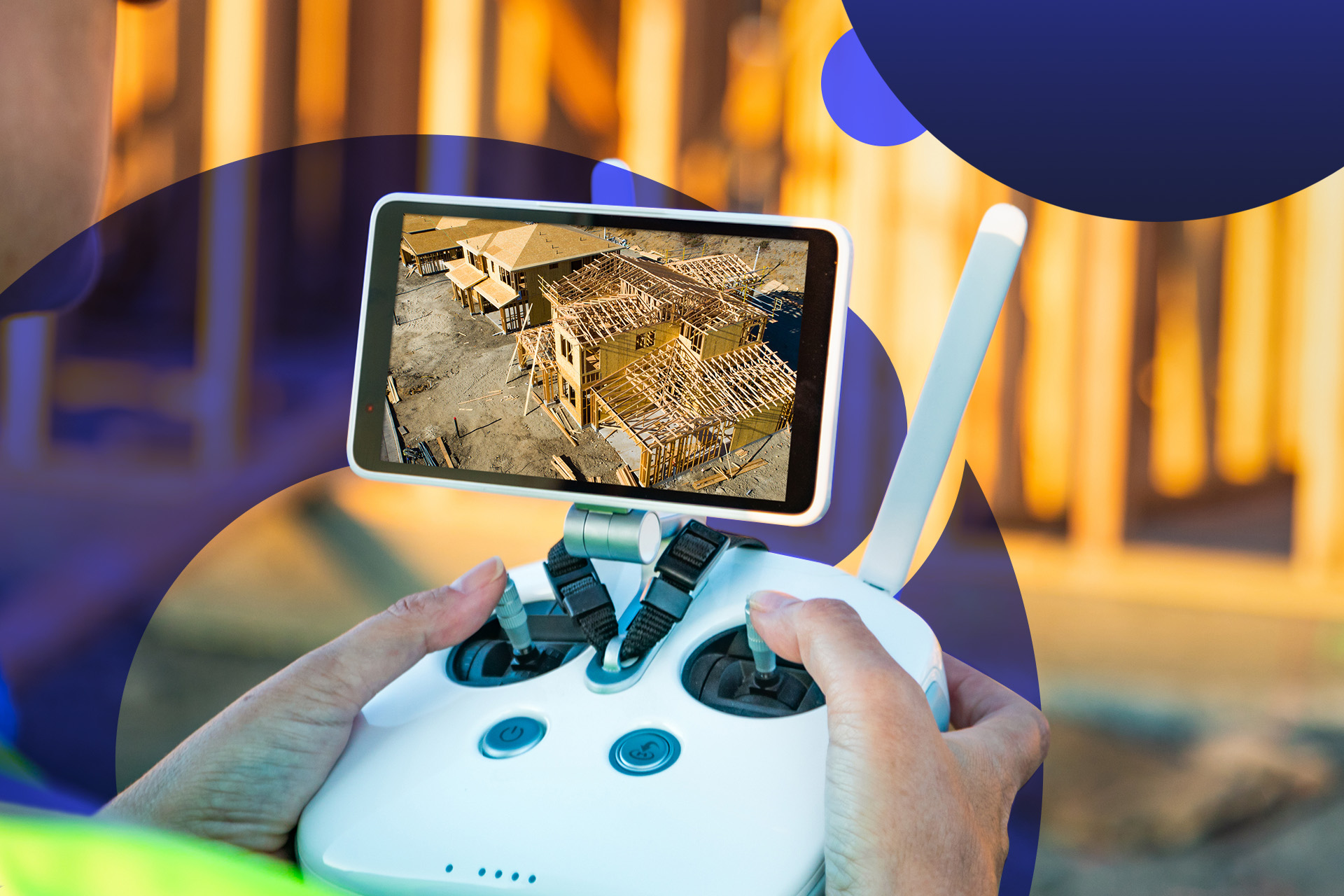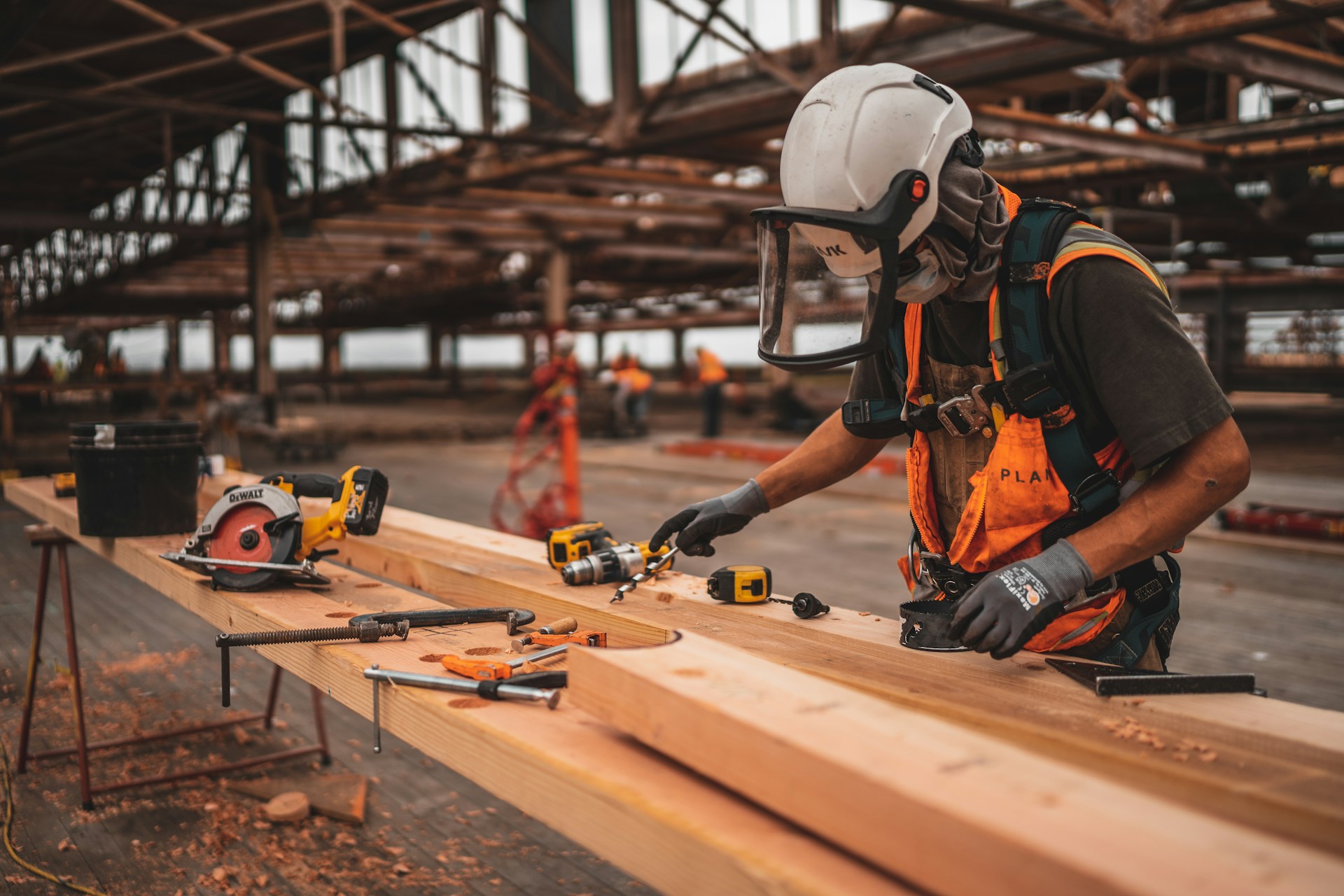
7 Types of Smart Equipment Used for Construction
November 17, 2022 - Ellie Gabel
Revolutionized is reader-supported. When you buy through links on our site, we may earn an affiliate commission. Learn more here.
Construction is one of the most dangerous industries — but it’s also fair to say it’s an industry ripe for innovation. Various types of smart equipment used for construction are becoming increasingly popular among different firms.
New construction equipment and technology can improve operational efficiencies, enhance worker safety and support the building of high-quality structures. Many people would agree that the built environment wouldn’t be where it is today without the industry’s adoption of the latest technology.
While often seen as expensive, there are plenty of cost-effective, valuable smart construction solutions available to help firms improve operations and performance.
7 Examples of Smart Equipment Used for Construction
Learn more about seven different types of smart equipment used for construction and how they’re transforming the overall industry.
1. Wearables
Smart wearable technology is popular within the consumer electronics market. For instance, smartwatches and fitness trackers have become popular wearables many consumers use to monitor their workout, track steps and view calories burned. However, smart wearables are entering the construction scene, helping to improve worker safety, health and productivity.
The Apple Watch has three crucial features that make it an essential safety companion for construction workers. These benefits include fall detection, health and activity data and hands-free communication.
Workers can send alerts to others if they suffer from a fall with the watch’s fall detection capability. They can also monitor their heart rate to avoid overexertion, and communicate hands-free if they’re unable to use other devices, like a radio or smartphone. Other examples of smart wearables include hard hats, boots and exoskeletons.
2. IoT-Enabled Devices
IoT is all the rage these days, as it penetrates virtually every sector and offers companies a slew of benefits. IoT devices are a significant type of smart technology that will transform construction. Additionally, advanced 5G technology will provide companies with a strong internet connection, making the IoT more workable in various applications.
Advanced onboard computers with smart IoT sensors help workers diagnose problems with any machines or tools before they fail. In other words, IoT devices are instrumental in allowing construction companies to schedule preventive maintenance and avoid paying for costly repairs or replacements.
IoT-enabled fleet telematics solutions are also capable of tracking valuable assets across sites, such as different types of equipment and associated attachments. As the construction industry becomes more data-driven, using IoT sensors and devices will only grow more necessary.
3. Heavy Machinery
Heavy machinery, whether a bulldozer, crane, grader or backhoe, are absolute essentials on a modern construction site. Operating these machines requires specific technical skills and experience. However, some researchers are developing smart heavy machinery with remote control and autonomous capabilities.
For example, SRI International, a nonprofit research institute, designed a smart excavator for construction sites. The prototype comes with traditional controls, but workers can also control it from other locations using augmented reality (AR) technology.
The excavator is not ready yet, but, those working on the project hope that it soon will automatically detect people. If workers breach the perimeter of the excavator while it’s completing a task, it would freeze and flash alert signals to alert the worker that they’re too close.
4. Virtual Reality (VR)
VR is another piece of technology that will grow more popular in construction. One reason for its growth is that it has so many applications in this industry compared to others. It can help firms improve building design, enhance safety and training programs and pitch projects.
For example, some VR-based apps allow construction companies to turn their 3D designs into a VR-compatible environment. Wearing a VR headset, clients and collaborators can become immersed in a design, allowing them to better visualize the final product and request any necessary changes.
Employees also benefit from VR when they undergo training. For example, VR enables workers to practice operating heavy machinery in a safe environment. Because construction professionals operate in dangerous environments, effective training is paramount in keeping them safe.
5. Drones
Analyzing a site’s topography, tracking site activities and monitoring other important data is critical in the construction sector. Drones make these tasks easier and allow some activities to be performed remotely and in near real-time. Komatsu, a construction equipment giant, announced a new Smart Construction Drone into its suite of construction solutions.
Construction workers and contractors can leverage Komatsu’s drone to analyze topography data, manage projects, take still photos from 400 feet above ground level and track production.
All of these benefits, along with others like cost reduction, improved workflow, better communication and higher levels of efficiency, show how important drones are on construction sites.
6. Robots
Another type of smart technology used for construction is robots. Autonomous robots are one of the hottest trends in construction. It’s estimated that the construction robot market will reach around $242 million by 2030, according to Statista.
Construction robots have several applications, including finishing building exteriors, placing steel beams, reinforcing concrete and even constructing walls. Inspection robots can also monitor a site’s progress and ensure a building’s infrastructure is sound.
Other types of construction robots will likely enter the market, such as brick-laying, construction layout, welding, demolition and rebar work robots. Some industry professionals are concerned about robots causing worker displacement. However, it’s commonly understood that adopting robots for construction involves placing them alongside human workers, not entirely replacing them.
7. Autonomous Vehicles
Self-driving or autonomous vehicles are still in their infancy, but they could make waves in the construction industry. Because AI-powered vehicles are not quite ready to go mainstream yet, some construction professionals are hesitant to be early adopters or commit to any financial investments in this technology.
However, because the sector has suffered from an ongoing labor shortage for years now, driverless vehicles could be the next big thing in construction. In 2016, a self-driving dump truck sparked interest, eventually fizzling out. A few years later, in 2021, a Chinese construction company dominated headlines when a driverless paver resurfaced the Nanjing-Shanghai Expressway.
As mentioned above, construction is one of the main industries benefiting most from the use of smart technologies and equipment.
Benefits of Investing in Smart Equipment for Construction
As the world grows increasingly digital, data-driven and reliant on smart tech, it’s no surprise that construction companies will follow suit. In order to keep up with industry trends and maintain a competitive edge, firms would be wise to consider investing in smart construction tech. It’ll be fascinating to see how the construction industry changes as smart equipment become more ubiquitous.
Revolutionized is reader-supported. When you buy through links on our site, we may earn an affiliate commission. Learn more here.
Author
Ellie Gabel
Ellie Gabel is a science writer specializing in astronomy and environmental science and is the Associate Editor of Revolutionized. Ellie's love of science stems from reading Richard Dawkins books and her favorite science magazines as a child, where she fell in love with the experiments included in each edition.






